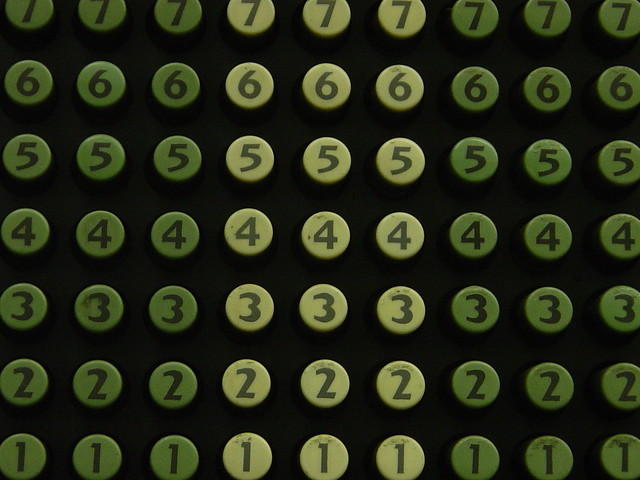
And here is a round-up of this week’s Green numbers…
-
50% rise in companies using software to monitor sustainability performance, says new survey
The proportion of companies that use software to monitor their sustainability performance increased by 50 percent between 2006 and 2010, according to the results of a new international survey released today, Thursday 27 January 2011, by the Global Reporting Initiative (GRI).
Experts from GRI say this means that guidance for people producing sustainability reports should be kept up to date with emerging trends in software use and digital reporting.
-
Efficiency could cut world energy use over 70 per cent
Simple changes like installing better building insulation could cut the world’s energy demands by three-quarters, according to a new study.
Discussions about reducing greenhouse gas emissions usually concentrate on cleaner ways of generating energy: that’s because they promise that we can lower emissions without having to change our energy-hungry ways. But whereas new generation techniques take years to come on stream, efficiency can be improved today, with existing technologies and know-how.
-
AZ Republicans and Democrats Agree, Energy Efficiency Saves Billions
Much has been made in recent weeks of the stark political controversies that haunt Arizona politics. There, intense debates over immigration, over healthcare, over a host of issues, have led to a growing sense that Arizona?s politics have left the mainstream behind.
But there is another Arizona, an Arizona of bipartisan unanimity and progress hidden beneath the saddening headlines of late. That hidden story of Arizona reveals a state that is leading the country down the new and much-needed road to energy efficiency, with standards that are among the most ambitious in the nation. It is a story that has been lost. But it is a story that Arizonans of all political stripes deserved to be celebrated for and a story the rest of us need to hear.
-
Dow Moves to Make Nature Part of the Bottom Line
Dow Chemical and the Nature Conservancy (TNC) announced a partnership on January 25 during a press conference at the Detroit Economic Club to develop tools and demonstrate models for valuing nature in business. Dow committed $10 million over the next five years to the collaboration with TNC. Jennifer Molnar, manager of TNC?s Analysis Team, called the partnership a ?breakthrough.?
The partnership will use scientific models, maps, and analysis for biodiversity and ?ecosystem services?, a Dow press release states, and apply them to the company?s business decisions. The partnership will also ?inform Dow on setting new policies and approaches in the areas of land and water management, siting considerations, the benefits of natural resources on Dow lands and waterways, and more explicit management of biodiversity.?
-
GM takes $7 million stake in battery startup Envia
General Motors Co has invested $7 million in Envia Systems, a California-based start-up that has been developing more powerful and cheaper batteries for electric vehicles.
Newark, California-based Envia has developed cathode technology for lithium-ion batteries that it says will make them both cheaper and more powerful.
GM said Wednesday it also reached a separate licensing agreement to use the Envia cathode technology in future electric vehicles.
-
What I Learned in Two Years of Running GridWise Alliance
As I take my leave as president of the GridWise Alliance, I feel pride in our accomplishments and gratitude for having been involved in a period of enormous growth in the industry and organization. Alliance membership grew during my tenure from 70 to 150 members. These new members included stakeholder groups like the automotive and buildings sector that could join forces with the existing ICT, telecom, and manufacturing components and the utility and system operator member base.
We started building relationships with consumer groups and were founding members of the Smart Grid Consumer Collaborative, bringing together regulators, consumer advocates, and industry leaders.
-
EnerNOC Acquires M2M Communications and hundreds of megawatts of demand response capacity
EnerNOC, Inc., a provider of energy management applications, has acquired M2M Communications, a provider of wireless technology solutions for energy management and demand response.
According to EnerNOC, its solutions reduce real-time demand for electricity, increase energy efficiency, improve energy supply transparency in competitive markets, and mitigate emissions. Some of the energy management applications offered by EnerNOC includes DemandSMART for comprehensive demand response, EfficiencySMART for data-driven energy efficiency, SupplySMART for energy price and risk management, and CarbonSMART for enterprise carbon management.
By acquiring M2M Communications, EnerNOC plans to expand its portfolio of automated resources, thereby augmenting third-party automated demand response.
-
SAP reduces 2010 Greenhouse Gas Emissions despite double-digit revenue growth
SAP today announced its preliminary report of greenhouse gas (GHG) emissions for 2010. The company?s worldwide GHG emissions for 2010 totaled 430 kilotons, a four percent decrease from the 450 kiloton level of 2009. In its third year of consecutive reductions, SAP has cut GHG emissions by 24 percent from its peak levels in 2007, putting the company well on track to achieve its target of reducing emissions to 2000 levels by 2020.
Using its own software to measure, report and reduce its carbon footprint, SAP can attribute the emissions decrease to a variety of efforts and investments in energy and carbon efficiency projects. Contributing factors to the company?s footprint reduction also include changes in employees? commuting practices and the purchase of renewable energy.
You should follow me on Twitter here
Photo credit house of bamboo


